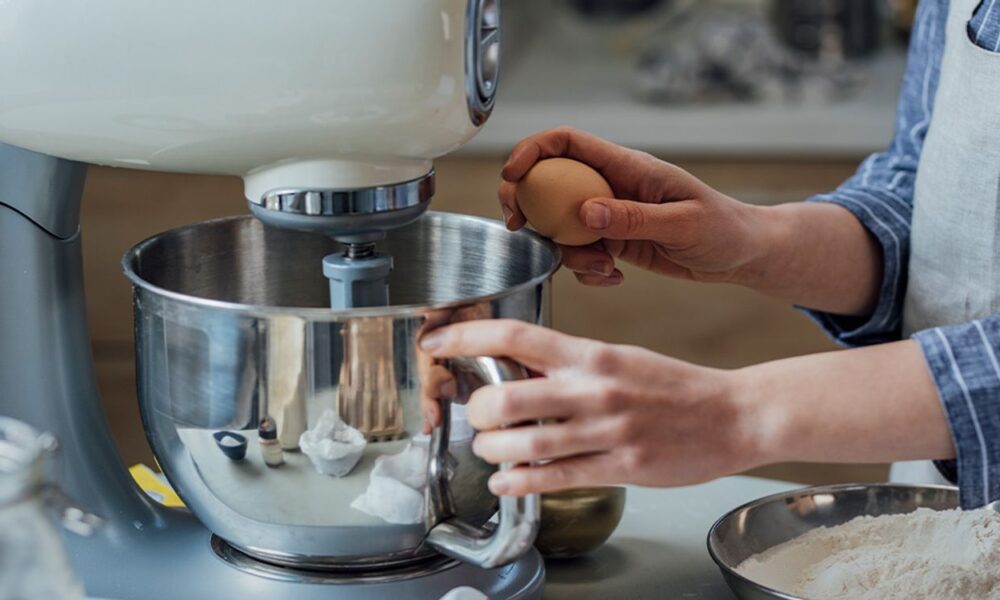Understanding Modern Food Blending Challenges
The contemporary food production landscape teems with combining efficiency and quality demands. Catering to discerning consumer palates requires an intricate dance of science and technique, bringing about a significant reliance on blending equipment sophistication. Central to scaling production levels is utilizing a versatile and precise industrial mixer for food blending; such apparatus should support the meticulous replication of sumptuous flavors and textures, ensuring the final product passes stringent quality checks with flying colors. These challenges intensify when considering the myriad of textural outcomes food products may necessitate. Granular consistency, smooth purees, or perfectly suspended emulsions—the suitable mixer must handle these variations without a hitch. Not to be overlooked is the omnipresence of rigorous health and safety standards, a realm in which manufacturing units cannot afford slip-ups. Therefore, the technical cleanliness of mixers becomes non-negotiable, necessitating equipment engineered with sanitary design principles front and center.
The Role of Smart Technology in Food-Blending Equipment
The advent of ‘smart’ blending equipment is more than a technical fad—it’s a transformative journey towards hyper-optimized production. Monitoring the minute-by-minute saga of food blending has shifted from human scrutiny to algorithms’ watchful gaze. The Internet of Things punctuates this narrative with its ability to arm mixers with a communicative prowess, wielding data for operational refinement and predictive maintenance—a vanguard against the unexpected breakdowns that could ripple through the supply chain with costly repercussions.
Hygiene and Sanitation in Food Blenders
Consumers’ trust in food safety is as valuable as the products themselves, defining the razor-sharp focus on hygiene and sanitation. Mixers come into direct contact with ingredients, and every nook capable of harboring contaminants is a potential hazard. A feather in the cap of modern mixer design is the accessible and smooth surfaces that advocate for uncompromised sanitation. Marks of excellence in these machines echo the approved materials that deny pathogens a foothold and the error-proofed cleaning protocols that ensure pristine conditions during post-production phases.
Customization and Scalability of Mixers
In a realm where one mixer does not fit all, the skill to tailor to the peculiarities of various food items comes as a breath of fresh air. Whether the need is for a gentle blend that caresses delicate flavors or a vigorous mix that robustly fortifies structures, the ability to scale and customize mixers equates to operational nirvana. Modular marvels empower facilities to rapidly reconfigure as per the product line’s whimsy, facilitating a production landscape that never stagnates but instead pulsates with adaptive dynamism.
Enhanced Safety Features in Industrial Blending Equipment
Armoring blending equipment with safety features is no longer optional—it’s indispensable. Delving into automation and integration, modern mixers place a safe distance between operators and potential hazards. Shielding employees from the mechanical behemoths might not only abide by regulatory frameworks but also foster a culture of safety that percolates through every layer of food manufacturing operations, preserving the well-being of those at the heart of the industry.
Mixer Versatility and Multi-function Capability
The flexibility of a mixer’s repertoire to perform across various textures and consistencies underscores its role as an industrial chameleon. The more a single piece of equipment can adapt to handle diverse blending tasks, the more valuable it becomes in a space where time equates to quality and currency. Such versatility is not an optional luxury but a strategic asset, leading to leaner processes that meld consistency with innovation.
The Impact of Mixer Speed and Efficiency on Product Quality
The speed of a mixer is like the gearshift that determines the quality and efficiency of blending. This speed control is essential to create a perfect blend of all the ingredients. By controlling the rotational forces, the food industry can produce high-quality products. The speed parameters are important because they affect the physics of food processing. By optimizing the mixer speed, the amount of waste can be reduced, and the yield can be increased, resulting in higher customer satisfaction. Recent research has shown that mixer efficiency plays a pivotal role in defining the quality of the final product. The motion of the mixer must be swift yet conscientiously moderated to achieve the perfect blend. This blending process imparts an exalted standard of finesse that reflects in the product’s taste, texture, and longevity.
Concluding Thoughts: Selecting the Right Mixer for Your Operation
The pursuit of the quintessential mixer is as much a scientific exercise as it is a strategic one. It’s a critical investment that must align with current and anticipated processing exigencies. Understanding what constitutes a mixer that complements your operation requires more than a cursory glance at specifications; it beckons a deep dive into the core of your production process, aspirations, and innovations that will future-proof your investment. With collaborative synergy, manufacturers and food processors put their heads together to devise solutions that embody a shared vision of efficiency and growth.
